 As printing technology has undergone significant advancements, printer ink has become a cornerstone of modern printing. But have you ever pondered the makeup of printer ink? In this exploration, we’ll delve into the composition of printer ink, its historical roots, and any potential toxicity concerns.
As printing technology has undergone significant advancements, printer ink has become a cornerstone of modern printing. But have you ever pondered the makeup of printer ink? In this exploration, we’ll delve into the composition of printer ink, its historical roots, and any potential toxicity concerns.
-
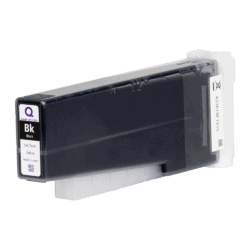 Kiaro! 200 & QuickLabel QL-120 Black Ink SKU: 14731204$242.00
Kiaro! 200 & QuickLabel QL-120 Black Ink SKU: 14731204$242.00
FREE SHIPPING over $199*
Orders before 12PM EST usually Ship Same Business Day -
 Epson ColorWorks C3500 Cyan Ink Cartridge SJIC22(C) for Epson C3500 SKU: C33S020581 GTIN: 4988617161696$21.75
Epson ColorWorks C3500 Cyan Ink Cartridge SJIC22(C) for Epson C3500 SKU: C33S020581 GTIN: 4988617161696$21.75
FREE SHIPPING over $199*
Orders before 12PM EST usually Ship Same Business Day -
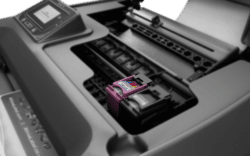 Afinia L301 Tri Color Ink Cartridge SKU: 26548 GTIN: 678621140216$49.95
Afinia L301 Tri Color Ink Cartridge SKU: 26548 GTIN: 678621140216$49.95
FREE SHIPPING over $199*
Orders before 12PM EST usually Ship Same Business Day
What is Printer Ink?
Ink is a fluid or semi-liquid substance employed for writing, drawing, and, of course, printing. It has been a fundamental medium of communication and artistic expression for countless centuries. In the realm of printers, ink serves as the essential material that facilitates the transfer of text and images onto paper and various other surfaces.
What is the History of Printer Ink?
The history of ink dates back to ancient civilizations. The earliest known ink, believed to be over 4,000 years old, was crafted from a blend of soot, animal glue, and water. Over time, diverse cultures honed their ink recipes, utilizing locally available materials.
Throughout history, ink has been concocted from a diverse array of substances, including plant extracts, minerals, and even the ink sacs of squids and octopuses. The watershed moment in ink’s history came with Johannes Gutenberg’s invention of the printing press in the 15th century, which prompted the development of ink formulations tailored for mass printing.
Is Printer Ink Toxic?
The toxicity of printer ink hinges largely on its composition, which is categorized into two main types: pigment-based ink and dye-based ink.
Pigment-Based Ink:
Pigment-based ink comprises minuscule solid particles of colorants suspended within a liquid carrier. These colorants can be crafted from synthetic or natural compounds. Known for their longevity and resistance to fading, pigment-based inks are typically deemed non-toxic and safe for regular use.
Dye-Based Ink:
Dye-based inks, however, are made up of liquid carriers that dissolve soluble colorants. Even though they are capable of producing vibrant colors, environmental factors and light can cause them to fade. The solvents in dye-based inks may emit volatile organic compounds (VOCs), potentially causing respiratory irritation. However, dye-based inks are generally not considered a significant health hazard under standard printing conditions because their toxicity is generally low.
It’s crucial to recognize that printer inks are tailored for specific printer models, and the use of incompatible ink can result in printing problems and impact document or image quality. To ensure both safety and printer performance, it’s advisable to use manufacturer-recommended ink cartridges.
While most printer inks are not highly toxic, prudent handling precautions should be exercised. Avoid contact with eyes and skin, and maintain adequate ventilation in your printing environment, particularly when dealing with substantial ink quantities. In the event of accidental ink ingestion or exposure, seek medical guidance and follow the safety instructions provided by the manufacturer.
-
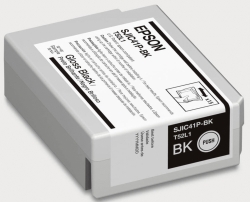 Epson ColorWorks C4000 Gloss Black Ink Cartridge SJIC41P(BK) for Epson C4000 SKU: C13T52L120$34.00
Epson ColorWorks C4000 Gloss Black Ink Cartridge SJIC41P(BK) for Epson C4000 SKU: C13T52L120$34.00
FREE SHIPPING over $199*
Orders before 12PM EST usually Ship Same Business Day -
 QuickLabel Kiaro! D Black Ink SKU: 14831104$242.00
QuickLabel Kiaro! D Black Ink SKU: 14831104$242.00
FREE SHIPPING over $199*
Orders before 12PM EST usually Ship Same Business Day -
 Afinia L501 / Afinia L502 / Afinia F502 Black Pigment Ink Cartridge SKU: 30685 GTIN: 678621140421$54.95
Afinia L501 / Afinia L502 / Afinia F502 Black Pigment Ink Cartridge SKU: 30685 GTIN: 678621140421$54.95
FREE SHIPPING over $199*
Orders before 12PM EST usually Ship Same Business Day
How is Printer Ink Made Today?
Contemporary printer ink is a complex blend meticulously engineered to deliver vibrant, long-lasting prints. It predominantly comprises the following key elements.
Colorants
Colorants in printer ink are responsible for producing the desired hues. Depending on the ink type, these colorants can be pigments or dyes.
Solvents
Solvents act as the liquid carriers in printer ink, dissolving colorants and ensuring smooth flow through printer nozzles. Water-based or solvent-based inks are available, depending on the ink type.
Additives
Various additives are incorporated into ink formulations to enhance performance and stability. In addition to these additives, humectants, stabilizers, and surfactants are also present.
What is the Difference Between Pigment Ink and Dye Ink
One of the primary distinctions in printer ink lies in whether it’s pigment-based or dye-based. Here’s a breakdown of their disparities:
Pigment Ink:
- Colorants: Pigment-based ink employs solid, microscopic colorant particles that remain insoluble and suspended in the ink.
- Durability: Documents and prints printed using pigment ink have excellent water and fading resistance.
- Vibrancy: While offering good color accuracy, pigment ink may not achieve the same level of vibrancy and saturation as dye-based ink.
- Cost: Pigment ink cartridges are often pricier than their dye-based counterparts.
Dye Ink:
- Colorants: Inks based on dye are colored with soluble dyes dissolved in liquid carriers. These prints are less lightfast and water-resistant than pigment-based inks.
- Vibrancy: Dye ink is renowned for producing vibrant and saturated colors, making it a preferred choice for photo printing and graphics.
- Durability: It is more likely that dye ink prints will fade over time, especially when they are exposed to light and other environmental factors.
- Cost: Dye ink cartridges are generally more economical than pigment ink cartridges.
Your specific printing needs determine whether pigment or dye ink should be used. Pigment ink is favored for documents that demand longevity, while dye ink often takes the spotlight for high-quality photo prints and graphic designs.
-
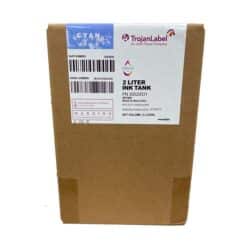 Trojan T2 / Trojan T2C Natura Cyan Ink TrojanLabel INK-T2C-C-Natura SKU: 30020031$1,495.00
Trojan T2 / Trojan T2C Natura Cyan Ink TrojanLabel INK-T2C-C-Natura SKU: 30020031$1,495.00
FREE SHIPPING over $199*
Orders before 12PM EST usually Ship Same Business Day -
 Epson ColorWorks C6000 / Epson C6500 GLOSS Black Ink Cartridge SJIC35P(K) for Epson CW-6000 / CW-6500 SKU: C13T44B120$51.50
Epson ColorWorks C6000 / Epson C6500 GLOSS Black Ink Cartridge SJIC35P(K) for Epson CW-6000 / CW-6500 SKU: C13T44B120$51.50
FREE SHIPPING over $199*
Orders before 12PM EST usually Ship Same Business Day -
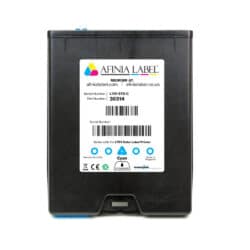 Afinia L701 Cyan Ink Cartridge Standard SKU: 30314 GTIN: 678621140360$226.00
Afinia L701 Cyan Ink Cartridge Standard SKU: 30314 GTIN: 678621140360$226.00
FREE SHIPPING over $199*
Orders before 12PM EST usually Ship Same Business Day
Is Printer Ink Bad for the Environment?
Concerns have arisen about the environmental footprint of printer cartridges, stemming from their disposal and the materials utilized in their manufacturing. The environmental impact encompasses:
Waste Generation:
Discarding empty printer cartridges contributes to electronic waste (e-waste), which can take centuries to decompose in landfills.
Resource Utilization:
The production of printer cartridges consumes substantial resources, including plastics, metals, and energy.
Carbon Footprint:
Transporting printer cartridges to and from manufacturing facilities adds to the carbon footprint.
Recycling Efforts:
Many manufacturers now offer recycling programs for used cartridges to mitigate their environmental impact. Exploring these options is essential to minimizing cartridge waste.
Why is Printer Ink So Expensive?
Printer ink is often perceived as costly, with several factors contributing to its price tag:
Research and Development:
Ink manufacturers invest in research and development to create ink formulations that yield high-quality prints and durability. In turn, these costs are passed on to consumers.
High-Quality Colorants:
The utilization of premium colorants, particularly in pigment inks, contributes to the overall cost. These colorants are meticulously engineered to resist fading and maintain color accuracy.
Cartridge Technology:
Printer cartridges are designed with precision engineering to ensure reliable performance, incorporating chip technology that communicates with the printer.
Marketing and Packaging:
Marketing and packaging expenses are also factored into the cost of printer ink.
-
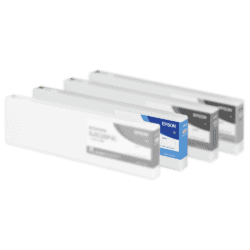 Epson ColorWorks C7500 Cyan Ink Cartridge SJIC26P(C) Matte Cyan Ink for C7500 SKU: C33S020615 GTIN: 4988617196070$185.50
Epson ColorWorks C7500 Cyan Ink Cartridge SJIC26P(C) Matte Cyan Ink for C7500 SKU: C33S020615 GTIN: 4988617196070$185.50
FREE SHIPPING over $199*
Orders before 12PM EST usually Ship Same Business Day -
 Afinia L801 Cyan Ink Cartridge Standard SKU: 22467$226.00
Afinia L801 Cyan Ink Cartridge Standard SKU: 22467$226.00
FREE SHIPPING over $199*
Orders before 12PM EST usually Ship Same Business Day
How is Printer Ink Made?
The manufacturing of printer ink involves several key stages:
- Colorant Selection: Manufacturers choose colorants based on the desired ink characteristics.
- Mixing: Colorants are precisely mixed with solvents and additives to craft the ink formulation.
- Quality Control: Ink meets specific performance standards through rigorous quality control measures.
- Cartridge Filling: The ink is then meticulously filled into cartridges.
- Packaging: Cartridges are sealed and packaged for distribution.
Ink vs. Toner: How They Differ
Ink and toner serve distinct roles in the world of printing:
Ink:
- Form: Ink is a liquid or semi-liquid substance primarily used in inkjet printers.
- Application: Inkjet printers, common in homes and small offices, excel at color printing, photo reproduction, and detailed graphics.
- Usage: Ink is absorbed by paper, forming images through the deposition of tiny droplets of liquid ink onto the paper’s surface.
Toner:
- Form: Toners are powder-like substances that are used in laser printers and photocopiers.
- Application: Laser printers and photocopiers, often found in larger office environments, boast rapid printing speeds.
- Usage: Toner is fused onto paper using heat and pressure, creating robust prints resistant to smudging and moisture, unlike inkjet prints.
What is the Process of Forming Different Colors?
In both inkjet and laser printing, an array of colors is generated by combining primary ink or toner colors. The predominant primary colors in printing are:
- Cyan (C): A shade of blue-green, cyan is one of the primary colors employed in printing.
- Magenta (M): A reddish-pink hue, magenta is another primary color in the printing process.
- Yellow (Y): Yellow is a fundamental color in the subtractive color model utilized in printing.
- Black (K): Black plays a pivotal role in printing, especially for text and grayscale images; it is represented as “K” and stands for “Key.”
To achieve a broad spectrum of colors, printers adopt a combination of these primary colors in a process known as “CMYK” printing, where “C” signifies cyan, “M” for magenta, “Y” for yellow, and “K” for black. It is possible to create a wide range of hues and shades by adjusting the intensity of the primary colors.
-
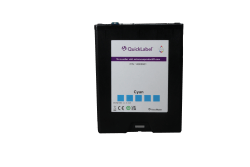 QuickLabel QL-900 Natura Ink Cyan – Cyan Ink Cartridge SKU: 14808901$212.00
QuickLabel QL-900 Natura Ink Cyan – Cyan Ink Cartridge SKU: 14808901$212.00
FREE SHIPPING over $199*
Orders before 12PM EST usually Ship Same Business Day -
 Trojan T2 / Trojan T2C / Trojan T3 Volume Press STD DGN 2L Cyan Ink TrojanLabel INK-T2C-C-DGN-2L SKU: 30030001$1,495.00
Trojan T2 / Trojan T2C / Trojan T3 Volume Press STD DGN 2L Cyan Ink TrojanLabel INK-T2C-C-DGN-2L SKU: 30030001$1,495.00
FREE SHIPPING over $199*
Orders before 12PM EST usually Ship Same Business Day -
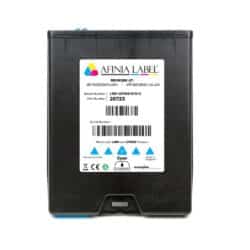 Afinia L901 / Afinia CP950 Cyan Ink Cartridge SKU: 26723 GTIN: 678621140322$250.00
Afinia L901 / Afinia CP950 Cyan Ink Cartridge SKU: 26723 GTIN: 678621140322$250.00
FREE SHIPPING over $199*
Orders before 12PM EST usually Ship Same Business Day
What Are the Advantages of Inkjet Printing?
Inkjet printing boasts several merits that render it a favored choice for various applications:
- High-Quality Color Printing: Color printers produce excellent color prints, making them ideal for printing photographs, designing graphics, and preparing marketing materials.
- Versatility: Inkjet printers are adaptable and capable of handling diverse media types, including various paper sizes and textures, glossy photo paper, and fabric transfer sheets.
- Cost-Effective for Home Use: Particularly for home users and small offices, inkjet printers often offer initial cost advantages compared to laser printers, coupled with lower energy consumption.
- Quieter Operation: Inkjet printers operate with less noise than their laser counterparts, making them suitable for quiet office environments and home settings.
- Smaller Footprint: Inkjet printers are generally compact and occupy less space than laser printers, catering to smaller workspaces.
However, it’s essential to note that inkjet printers may incur higher ongoing operational costs due to the need for more frequent replacement of ink cartridges, especially in scenarios involving heavy printing.
In conclusion, delving into the distinctions between ink and toner, as well as the captivating process of color formation in printing, illuminates the technology underpinning our daily documents and images. Inkjet printing, with its versatile color capabilities and other advantages, remains a preferred choice for various printing needs, ranging from photographic reproductions to business documentation.
Where Can I Get Printer Inks at the Best Price?
TCS Digital Solutions is a reputable provider of printer inks. We offer a wide range of ink solutions for popular printer brands like Afinia, Epson, Primera, QuickLabel, and TrojanLabel. TCS Digital Solutions ensures high-quality and compatible inks tailored to your specific printer model. Whether you’re in need of replacement ink cartridges or specialized ink formulations, We are a reliable source for meeting your printing requirements. Our commitment to quality and compatibility makes them a trusted choice for those seeking reliable printer ink solutions.



